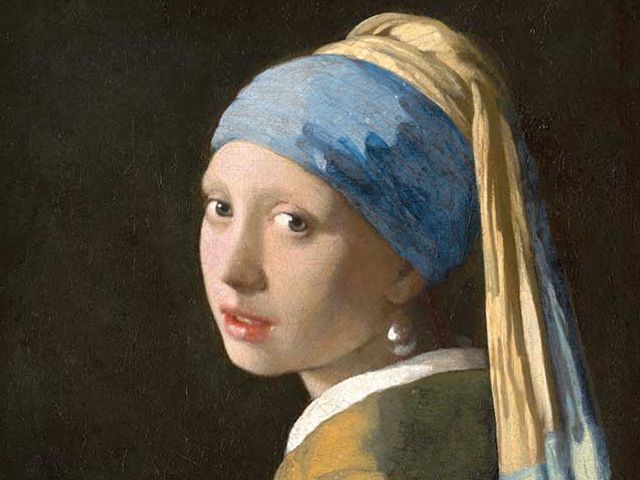Vermeer’s main patron was probably a woman, according to curators of the retrospective which is opening at the Rijksmuseum in Amsterdam this week. She was Maria de Knuijt, the wife of Pieter van Ruijven. For decades it has been assumed that Van Ruijven, a wealthy Delft citizen, was the patron. New research reveals that De Knuijt had much closer and longer links to Vermeer than her husband.
The identity of Vermeer’s patron is of vital importance, since they purchased half of the artist’s entire oeuvre, at least 20 paintings. Equally significantly, De Knuijt began to buy his work in around 1657, the time when Vermeer was switching from painting conventional religious and mythological subjects to creating his intriguing scenes centred around young women in interiors. This suggests that De Knuijt (along with her husband) may well have encouraged the artist to develop his art—creating the Vermeer that we know and love today.
The Rijksmuseum exhibition Vermeer (10 February-4 June) includes no fewer than 14 paintings once owned by De Knuijt. Among these are celebrated works such as The Milkmaid (1658-59, Rijksmuseum) and Girl with a Pearl Earring (1664-67, Mauritshuis, The Hague), the latter will be on display in Amsterdam until 30 March (when it returns to the Mauritshuis). The 14 paintings represent half of the 28 in the Amsterdam show. Vermeer’s total oeuvre, according to the Rijksmuseum, is 37 works.
The exhibition co-curator Pieter Roelofs points out that De Knuijt, who was nine years older than Vermeer, was a very close neighbour and would have seen him “playing in the neighbourhood as a young lad”. Her 1655 will records that she bequeathed 500 guilders to the artist, suggesting that they were friends (it was never actually disbursed, since Vermeer died before her). In 1657 De Knuijt’s husband lent 200 guilders to Vermeer.

Inventory of the estate of Magdalena van Ruijven, recording 20 Vermeer paintings (April 1683) Credit: City Archives Delft
Roelofs points out in the exhibition catalogue that in 17th-century Dutch society “as lady of the house she [De Knuijt] will have taken the lead in furnishing their home and purchasing paintings”. Pictures were then considered “household goods and thus part of domestic consumption”. He concludes that “everything points to De Knuijt being the collector of the [Vermeer] paintings”.
Van Ruijven died in 1674 and his wife in 1681. Their daughter Magdalena was deceased in 1682 and after her death an estate inventory recorded 20 paintings by Vermeer. One was in the kitchen, possibly The Milkmaid. Two others were in the cellar. Magdalena had married Jacob Dissius and after he died in 1695 his estate sold 21 Vermeers.
The much anticipated Rijksmuseum show is being presented in the museum’s spacious Phillips Wing and more than 200,000 tickets have been sold ahead of the opening. It will be the largest Vermeer exhibition ever held. Bringing together 27 paintings, this will be even larger than the group of 21 that once graced the Delft home of De Knuijt and Van Ruijven.




